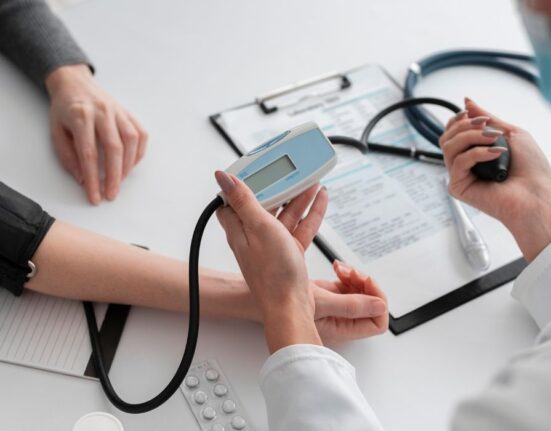Introduction to In Vitro Fertilisation (IVF)
In Vitro Fertilisation, or IVF, has emerged as a significant advancement in the field of reproductive medicine, providing a pathway for individuals and couples facing fertility challenges. IVF involves the process of combining an egg and sperm outside the human body, in a controlled laboratory environment, to create an embryo. This embryo is then transferred to the uterus with the hope of achieving a successful pregnancy.
IVF has provided a viable solution for those experiencing infertility due to various reasons, such as blocked fallopian tubes, male factor infertility, or conditions where the cause of infertility remains unidentified. Over the years, the development and refinement of IVF techniques have resulted in improved success rates, giving hope to many who had previously found it difficult to conceive.
The process of IVF begins with ovarian stimulation, where medication is administered to stimulate the production of multiple eggs. These eggs are carefully retrieved from the ovaries and fertilised with sperm in the laboratory. Once fertilisation occurs, the embryos are monitored for development, and one or more of the healthiest embryos are selected for transfer to the uterus.
The advancements in IVF technology have also led to the development of various treatment options tailored to meet individual needs. These options include standard IVF, natural cycle IVF, low stimulation IVF, cryopreserved embryo transfer, and egg donation IVF, each offering unique benefits depending on the patient’s specific circumstances.
IVF not only brings the possibility of parenthood within reach for many but also allows for greater control and planning in the conception process. By providing multiple pathways to overcome fertility obstacles, IVF continues to be a beacon of hope for those dreaming of becoming parents.
Standard IVF Procedure
The standard IVF procedure is designed to assist those with specific fertility issues. The process commences with ovarian stimulation, during which medication is administered to encourage the production of multiple eggs. These eggs are then carefully retrieved and fertilised with sperm in a laboratory setting. Once fertilisation occurs, the resulting embryos are closely monitored for development. One or more of these embryos are subsequently selected for transfer to the uterus.
The success of the standard IVF procedure is contingent on several factors, including the age of the individual and the quality of the eggs and sperm. Additionally, lifestyle factors such as diet, exercise, and stress levels can influence the outcome. Advanced laboratory techniques, such as intracytoplasmic sperm injection (ICSI) and preimplantation genetic testing (PGT), can be incorporated to address specific fertility issues and improve the chances of a successful pregnancy.
Standard IVF is suitable for a variety of fertility challenges, including blocked fallopian tubes, male factor infertility, and cases where the cause of infertility is unknown. This method has provided a practical solution for many individuals and couples striving to overcome natural barriers to conception. With advancements in medical technology, the standard IVF procedure continues to evolve, offering renewed hope for those eager to start their families.
Natural Cycle In Vitro Fertilisation
Natural Cycle IVF offers a more natural approach by focusing on the body’s inherent reproductive rhythms. Unlike traditional IVF, it does not involve the use of stimulating drugs, relying instead on the natural selection of a single egg. This method minimises medical intervention and avoids the side effects commonly associated with fertility medications, making it a less invasive option. Natural Cycle IVF is particularly advantageous for individuals who prefer a more organic method or have conditions that make them unsuitable for high-dose hormone treatments. It can also be ideal for those with a lower ovarian reserve, as it works in harmony with the body’s natural processes. By following the natural menstrual cycle, the procedure typically involves monitoring through ultrasound and blood tests to identify the optimal time for egg retrieval. The retrieved egg is then fertilised in the laboratory, and the resulting embryo is transferred to the uterus. Although Natural Cycle IVF may result in fewer eggs being retrieved, the approach can lead to higher quality eggs, potentially improving the chances of success. This method aligns with the philosophy of minimal intervention while still offering a viable route to conception for those facing fertility challenges.
Low Stimulation IVF
Low Stimulation IVF, also known as mild IVF, involves the use of lower doses of fertility medications to gently encourage the ovaries to produce eggs. This method aims to strike a balance between effective treatment and minimal medical intervention. By using reduced amounts of stimulating drugs, it significantly lowers the risk of ovarian hyperstimulation syndrome, a condition that can arise from higher-dose protocols.
Patients undergoing Low Stimulation IVF may find the process more comfortable and less physically taxing compared to conventional IVF. The milder approach can result in fewer eggs being retrieved, but these eggs are often of higher quality, which can enhance the likelihood of successful fertilisation and implantation.
This technique is particularly suitable for individuals who prefer a less invasive option or those who may not respond well to higher doses of stimulation. It also appeals to those looking for a treatment that aligns more closely with the body’s natural rhythms. Monitoring during Low Stimulation IVF typically involves regular ultrasounds and blood tests to track the development of follicles and determine the optimal time for egg retrieval.
Low Stimulation IVF offers an alternative pathway for those facing fertility challenges, providing a gentler, yet effective, approach to achieving pregnancy.
Cryopreserved Embryo Transfer
Cryopreserved Embryo Transfer leverages the potential of previously frozen embryos, presenting a flexible and convenient option in the IVF process. Once embryos are created through initial egg retrieval and fertilisation, any surplus embryos can be frozen and stored for future use. This allows for multiple attempts at achieving pregnancy without the need for repeated ovarian stimulation and egg retrieval cycles, thereby reducing the physical and emotional burden on patients.
Success rates for frozen embryo transfers have seen significant improvements, making this method a reliable choice for many. One of the key advantages is the ability to plan the timing of the transfer, ensuring it coincides with the optimal phase of the recipient’s menstrual cycle. This can be particularly beneficial for those who need to synchronise their treatment with other personal or medical considerations.
Additionally, Cryopreserved Embryo Transfer offers the possibility of genetic continuity within a family, as siblings can be conceived from the same batch of embryos. This can be important for individuals or couples looking to expand their family while maintaining genetic links.
This method also provides a safety net; if the first transfer does not result in a successful pregnancy, there are often additional frozen embryos available for subsequent attempts. This can alleviate some of the pressure associated with the IVF process, as it offers more opportunities for conception without starting the procedure from scratch. Overall, Cryopreserved Embryo Transfer adds a valuable dimension to the array of IVF treatment options.
Egg Donation IVF
Egg Donation IVF provides a crucial solution for individuals unable to produce viable eggs, offering them a chance to achieve pregnancy. The procedure involves fertilising donor eggs with sperm and transferring the resulting embryos to the recipient’s uterus. This method is particularly advantageous for women with conditions such as premature ovarian failure, advanced maternal age, or certain genetic disorders that they wish to avoid passing on.
Ideal candidates for Egg Donation IVF include those who have not had success with other fertility treatments or who have medical conditions that prevent the use of their own eggs. The process starts with selecting a suitable donor, who undergoes ovarian stimulation and egg retrieval. These eggs are then fertilised in a laboratory setting. Once the embryos reach a suitable stage of development, they are transferred to the recipient’s uterus.
Egg Donation IVF also offers the unique opportunity for recipients to experience pregnancy and childbirth, even if they cannot use their own eggs. For many, this method represents a beacon of hope, enabling them to build a family despite significant reproductive challenges.
Considerations and Future Steps
Choosing the right IVF treatment involves assessing medical history, personal preferences, and financial constraints. Consulting with a fertility specialist is essential to determine the most appropriate options tailored to individual needs. The IVF process can be emotionally and physically taxing, so support from loved ones or professional counselling can be invaluable. It’s important to stay informed about the latest advancements in fertility treatments to make well-informed decisions. Keeping a positive outlook and understanding that the journey may involve multiple attempts can help manage expectations and reduce stress. Navigating the complexities of IVF can be challenging, but each step taken brings you closer to realising your dream of parenthood.








Leave feedback about this